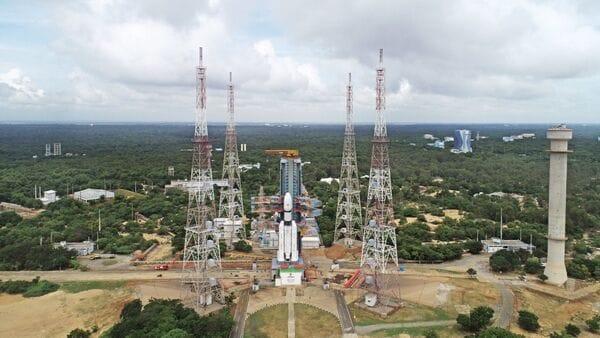
Countdown Begins For ISRO's LVM3-M5 Rocket Launch Carrying CMS-03 Communication Satellite On November 2
At around 4,410 kg, CMS-03 will be the heaviest satellite ever launched from Indian soil into a Geosynchronous Transfer Orbit (GTO), the space agency said. The satellite will be carried by the LVM3-M5 rocket, popularly known as“Bahubali” for its heavy-lift capability.
Also Read | ISRO space missions for 2025: From upcoming launches to schedule - all to knowISRO said the launch vehicle has been fully assembled and integrated with the spacecraft, and has been moved to the second launch pad to undergo final pre-launch preparations.
Here' s what ISRO saidLater in a social media post, ISRO said,“Countdown commences!! Final preparations complete and the countdown for LVM3-M5 (mission) has officially begun at Satish Dhawan Space Centre, Sriharikota”.
"All systems are GO as we move closer to liftoff," the space agency said in its update. The 43.5 metre tall rocket is scheduled for a 5.26 pm liftoff on November 2. LVM3- (Launch Vehicle Mark-3) is the new heavy lift launch vehicle of ISRO and is used for placing 4,000 kg spacecraft in GTO in a cost-effective manner, ISRO said.
This three-stage launch vehicle with two solid motor strap-ons (S200), a liquid propellant core stage (L110) and a cryogenic stage (C25) gives ISRO full self-reliance in launching heavier communication satellites that weigh up to 4,000 kg in GTO. LVM3- is also termed as Geosynchronous Satellite Launch Vehicle (GSLV) MkIII.
Also Read | Isro’s GSAT-9 satellite launch heralds Modi govt’s space diplomacy push
According to ISRO, the LVM3-M5 is the fifth operational flight. The LVM3 vehicle was developed with completely indigenised technologies, including the C25 cryogenic stage. It has a track record of all successful launches, even from the first development flight, LVM-3 Crew module Atmospheric Re-entry Experiment (CARE) launched in December 2014.
Watch LIVE hereIt is pertinent to mention that for the ambitious Gaganyaan mission, ISRO had planned the human-rated LVM3 rocket as the launch vehicle, which is named as HRLV.
The space agency had previously launched its heaviest communication satellite GSAT-11 on December 5, 2018 from Kourou launch base, French Guiana by Ariane-5 VA-246 rocket. Weighing about 5,854 kg, GSAT-11 is the heaviest satellite built by ISRO.
All you need to know about Sunday's missionThe ISRO said that Sunday's mission aims to deploy CMS-03, a multi-band communication satellite designed to provide services across a wide oceanic region, including the Indian landmass.
The LVM3 rocket, equipped with a powerful cryogenic upper stage, can carry payloads of up to 4,000 kg to Geosynchronous Transfer Orbit (GTO) and 8,000 kg to Low Earth Orbit (LEO).
Also Read | NASA's reply to Kim Kardashian's fake Moon landing claim sparks online backlashFor liftoff, the rocket relies on two S200 solid boosters mounted on its sides, developed at the Vikram Sarabhai Space Centre in Thiruvananthapuram. Its third stage, the L110 liquid stage, is powered by two Vikas engines designed and developed at the Liquid Propulsion Systems Centre.
The previous mission of the LVM-3 rocket was the successful launch of the Chandrayaan-3 mission, wherein India became the first country to land successfully near the lunar South pole in 2023.
Legal Disclaimer:
MENAFN provides the
information “as is” without warranty of any kind. We do not accept
any responsibility or liability for the accuracy, content, images,
videos, licenses, completeness, legality, or reliability of the information
contained in this article. If you have any complaints or copyright
issues related to this article, kindly contact the provider above.
















Comments
No comment